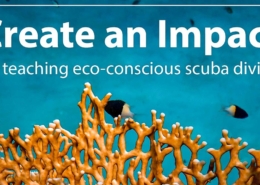Understanding ROI – Return On Investment
By Mark Powell
ROI may sound like a complex financial term but it’s actually a very straightforward, common-sense idea that should be used by any business making a decision on where to invest resources. ROI is simply the ratio between the investment you put in and the return you get back. A small investment may appear attractive but is less appealing if it only generates a small return.
For example, if a magazine advert only costs $300 then that may not seem very expensive, but if it only generates $200 in additional profit then it is not a very good investment. Even if it generated $300 in profit then it is still not very attractive as it has only generated the same amount that it cost.
A larger investment, of say $500, which generates a return of $2000 additional profit would be a much better investment.
Calculating ROI is a very straightforward process:
ROI = (Return – Investment)
Investment
It’s typically expressed as a percentage, so multiply the result above by 100 to convert it into a percentage.
For the example above, an investment of $300 for a return of $200 would be an ROI of -33%. The minus sign indicates that we made less than the initial investment. The second example, with an investment of $500 and a return of $2000 gives an ROI of 300%.
A common mistake when looking at ROI is to compare the initial investment with the revenue or sales generated rather than the profit generated. If an investment of $300 generates sales of $600 then initially that looks positive but remember you have to take into account the cost of goods sold. If those goods cost $400 then you have only made a profit of $200 and a $200 return on a $300 investment is not a good result. You would have been better off not making the investment in the first place. For this reason, ROI should always be calculated using the profit generated.
Advantages
The advantage of using ROI is that investments can be made on the basis of business generated rather than emotional or subjective preferences.
Another advantage of ROI is that it can be used to compare different projects. The ROI of each project can be calculated and the projects with the best ROI can be selected. This allows a business to make the most effective use of its resources and focus on the projects that will have the biggest impact on the financial health of the business.
Challenges
One of the challenges of calculating ROI is knowing how much return you are likely to get for a given investment. We don’t have a crystal ball, so we cannot predict exactly what the return is likely to be. However, a good investment decision should involve enough analysis to give a good forecast or estimate of the return. If you truly have no idea what the return will be for a particular investment then this calls into question the wisdom of making this investment.
The second challenge is that the initial investment may have secondary benefits. Advertising one product may in fact result in sales of a different product or may result in follow-on sales. For example, if a marketing campaign recruits an open water diver, we can calculate the profit from that open water course sale. However, if that diver then goes on to buy equipment and to sign up for several other courses then this profit should also be taken into account when calculating the ROI of the initial marketing campaign. It is impossible to tell how far an individual diver will go, but it is possible to calculate the typical lifetime value of an average open water diver and use this number in the ROI calculation.
Utilizing the strategy of ROI calculation and consideration is a clear benefit for any professional in the diving industry – from business owner to independent instructor. It is the technique used by us here at SDI/TDI/ERDI to evaluate new developments, and it can help you decide where to allocate your own resources. Understanding this will assist you in making an effective case for any new products, services, or investments you would like to see from your business.










發表評論
想加入討論?隨時歡迎參與討論!